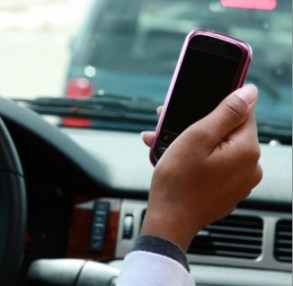
The current crop of in-car services show off fairly underwhelming advances. The Pandora app paired with Ford SYNC’s AppLink system will let you change stations while driving by using your voice and displays track information on the in-car display. An app by Roximity will let you find deals. Facebook announced a partnership with Mercedes that will allow drivers of 2013 SL-class cars to search for nearby friends and see restaurants that friends have Liked.
At the other extreme, Google is working on cars that can drive themselves.
But there’s a wide gulf between what’s being done today and Google’s vision. Although the National Transportation Safety Board recently called for a near-total ban on cell phone use while driving, there’s about as much a chance of that happening as McDonald’s going out of business because Americans refuse to eat fast food.
Here’s a list of the kind of smartphones apps I would have liked to have seen at CES — no-brainer apps that would make the driving experience safer and more convenient:
- Automatic emergency dialing. Based on the sensors in a smartphone, the phone could detect when you’re in an accident and automatically summon help. After a 5 to 10 second timeout (to reduce the risk of an inadvertent trigger) it would call 911. It could also be programmed to send a text message to a loved one and provide vital medical and contact information to first responders. Dedicated systems like OnStar provide a variant of this today, but this is a feature that could work with any car and without additional hardware and steep service fees.
- Voice-based speakerphone activation for incoming calls. When a call begins to ring, the microphone is automatically activated and the phone listens for a command like “Answer”. On an Android phone, the current process is that you have to find the answer button and then the speakerphone button. They are both soft buttons, which makes it impossible to do by feel.
- Destination text messages. Although GPS-based navigation systems have eliminated the needs for paper maps or printed driving directions, there’s still the matter of entering destination information. A frequent occurrence is people sending you text messages while you’re driving. Instead of sending a text message that you have to read and then enter into a navigation system, text messages with location information would be recognized and the phone would ask you whether you wanted to route to that address.
- “On my way” messages. This is the reverse of the above. It would allow you to easily send your location to someone else and allow them to track you until you reach your destination. This can eliminate a lot of worry and messages and calls back and forth.
- Presence manager. As smartphones are increasingly connected all the time to instant messaging systems like Gmail Chat and Facebook Messenger, it’s become common to get messages while driving. There’s a natural temptation to answer them, even though we know that’s not the right thing to do. This feature would change your presence settings to indicate that you are driving, encouraging people to either hold off on requests or call instead. It could be tied in with cars that are equipped with Bluetooth to automatically change presence when you enter and leave the car.
- Voice caller ID. When a new call comes in, the name of the caller is spoken. If you’re already on a call, instead of hearing a useless call-waiting tone, the name of the caller is spoken in your ear. This eliminates the need to look at the phone.
- Car finder. When you leave your car, this would automatically record the location of your car. Finding your car would be as simple as pulling up a map and getting directions. This could be based on speed or Bluetooth connection.
All of the above is imminently doable today; there are no major leaps forward in technology required. Some apps already provide variants of some of these features. For example, Glympse lets you send a link that allows the recipient to track your location for a set period of time.
Ford is allowing developers to tie into a car’s voice recognition system, text-to-speech engine, steering wheel controls, radio controls and displays. That opens up even more possibilities. Because of driver distraction concerns, Ford must approve all apps.
But Ford doesn’t charge developers or consumers for apps. “We are a car company,” said Julius Marchwicki, SYNC product manager. “We’d much rather sell you a vehicle than an app for 99 cents.”
Unfortunately for developers, each car maker has its own system. “I don’t think we’ve quite gotten to a point where we seen an imminent change to a standard,” Marchwicki said.
That dramatically limits the opportunity. Ford, which is the #2 carmaker in the U.S. and has been the most aggressive, has shipped a total of 300,000 vehicles with the AppLink system, said a Ford spokesperson.
For more news out of this week’s Consumer Electronics Show, be sure to check out VentureBeat’s live coverage from CES 2012.
[Top image credit: Marquis/Shutterstock.]
VentureBeat's mission is to be a digital town square for technical decision-makers to gain knowledge about transformative enterprise technology and transact. Learn More